

How You Tie Your Sneaker Laces is More Important Than You Think
How do you tie your sneaker laces?
I don’t mean actually understanding how to tie them yourself rather than asking someone else to do it for you. Hopefully this is something you mastered right around the time you started kindergarten.
What I mean is, do you tie your shoes in the standard crisscross pattern? Or do you like them to go straight across? Or maybe you don’t even tie them at all.
There is more than one way to tie your sneaker laces, and the way you tie them can affect your athletic shoes’ comfort and performance. I’d like to tell you how.
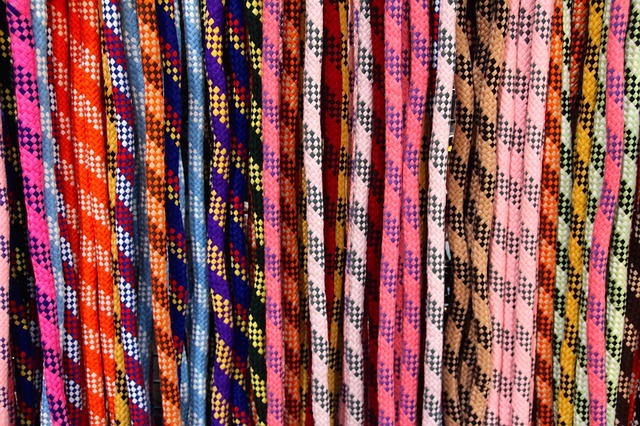
A Closer Look at Sneaker Laces
First, a little history.
Shoelaces have been around about as long as shoes themselves. Even primitive people needed a way to somehow bind their foot protection to their feet. So there is no exact information about the “invention” of shoelaces.
Shoelaces obviously help keep your shoes on your feet by tightening and holding your feet in the shoes. They ensure the proper fit for your shoes and can actually help prevent injury. Improper lacing can lead to blisters or foot injuries if your shoes are too loose, too tight, or rub your foot the wrong way. But tied correctly, laces keep your sneakers secure and comfortable.
Laces can be round or flat. Though the flat ones are designed to stay tied better than the round ones, I have noticed that they can also twist easily instead of lying flat against the shoe. It doesn’t seem to affect their stability, but it also doesn’t look as neat that way, especially if they have a colored pattern.
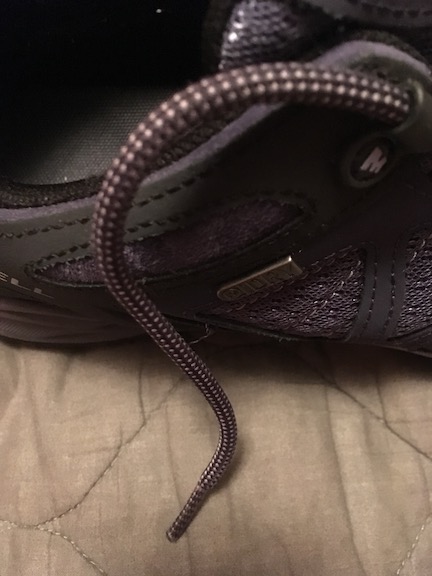 Round laces
Round laces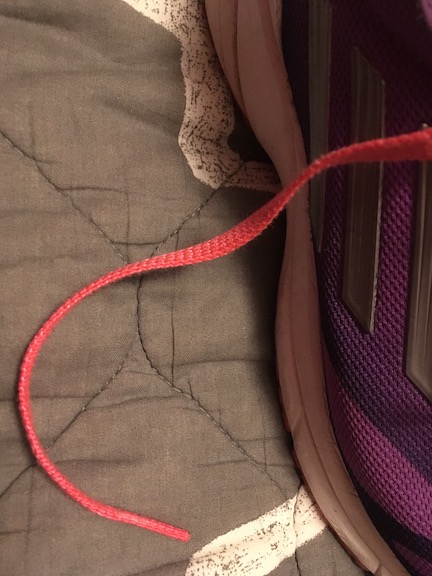 Flat laces
Flat lacesMost sneaker laces are made of cotton because it’s a cheap and durable material. But they can also be made of polyester or nylon. Some companies are working with new eco-friendly shoelace materials, like Allbirds. Each pair of its shoelaces, which you can buy separately on their website, is made from one recycled plastic bottle.
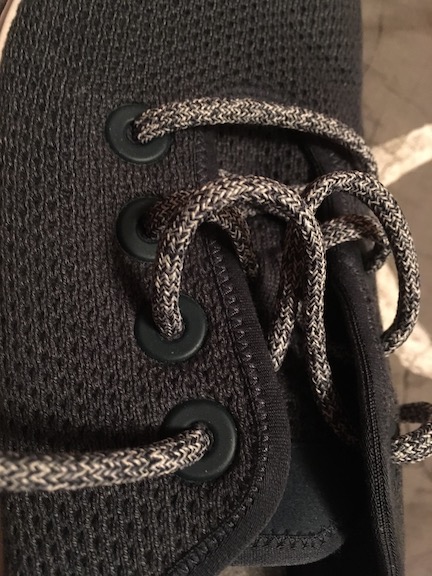 Sneaker eyelets
Sneaker eyeletsThe lacing loops that hold your sneaker’s laces are called eyelets, and they can be plastic, metal, or just an opening in the fabric of the shoe. Shoes with more eyelets allow a more custom fit because they offer more opportunities to adjust the tension.
The ends of shoelaces are called aglets. Remember this term in case you’re ever asked about it in a trivia game like I’ve been. These are the parts that cause major headaches if they are damaged. You know how frustrating it can be to try to shove laces with frayed ends through the narrow eyelets of your shoes!
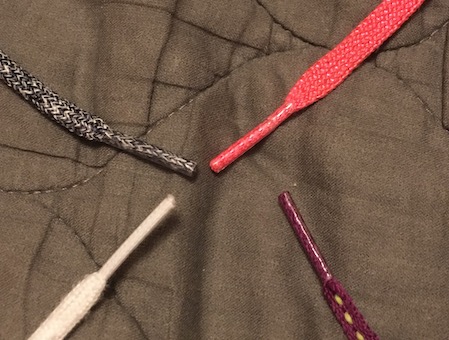 Lace aglets
Lace agletsSneakers come with laces when you buy them, so I’ve never really thought much about the laces – unless, of course, they break. I may have switched out the laces once or twice in my life if I wanted a snazzier color or maybe if the original ones were a little too long or too short for my liking. Otherwise I just tie my shoes and go without giving much thought to the laces. And I’m sure that’s what most of you do too.
Sneaker Lace Designs
Back in the “old days,” sneaker laces came in basic black or white. But that was before athletic shoes came in such bright and varied colors. Now the laces come in just as many colors and styles as the sneakers themselves, if not more.
Usually when you buy a pair of athletic shoes, the laces are white or they are a color that corresponds to the design elements of the shoes. For instance, my Adidas are red with white stripes, and the laces are white. And my older New Balance shoes are turquoise with purple and yellow accents, so the laces are purple with yellow dots.
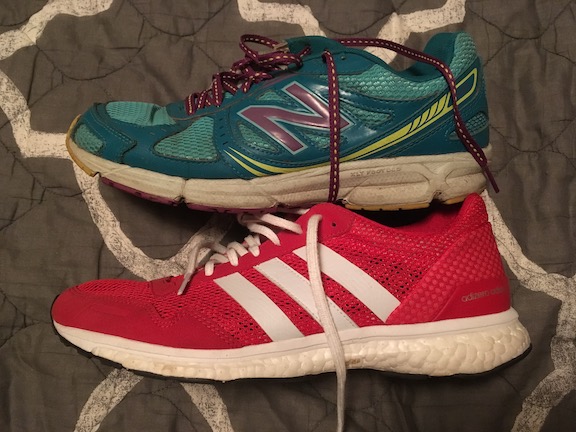
These newer colors and styles of sneaker laces add to the overall look and design of the shoes. But if that’s not enough for you, you can personalize your look by buying different colored and textured laces so your shoes are unique to you. You can even buy custom sneaker laces that you design yourself, picking the colors, styles, and materials, through retailers like Etsy or Underabuck.com.
How to Tie Your Laces
Okay, so back to what I promised you at the beginning.
Did you know that there are actually tons of ways that you can tie your sneaker laces, and that different tying patterns can create different effects?
When you buy your shoes, the laces are already inserted, generally in the familiar crisscross pattern. So you tie them up and go on your way. But if you have a specific foot problem, such as a high arch, a wide forefoot, or a narrow heel, then the pattern you use to tie your laces can help.
If you have a high arch, try the crisscross lacing pattern at the bottom of the shoe, then lace them vertically using only the side laces in the middle, and finish with another crisscross at the top. This can help relieve some of the pressure of the shoe rubbing on the top of your foot.
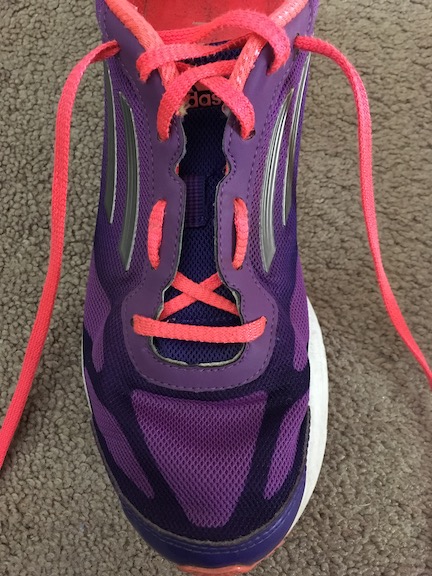 Lacing for high arches
Lacing for high archesFor a wide forefoot, lace your shoes vertically at the bottom and then crisscross at the top. This method can loosen up the forefoot of your shoes to create a better, roomier fit.
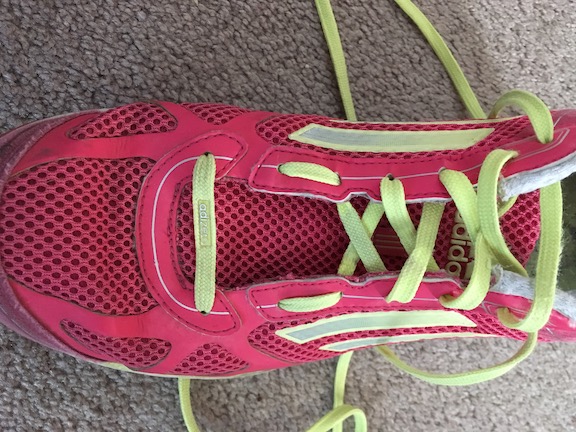 Lacing for wide forefoot
Lacing for wide forefootFor a narrow heel or if your shoes tend to slip off your heels, you can try a heel lock lacing system.
Creating a heel lock involves using the extra set of eyelets at the top of the shoe. They may sit at an angle compared to the rest of the line of eyelets. I never used these eyelets when lacing my own sneakers because they seemed to make the laces shorter or the shoe feel too tight.
But these eyelets are designed to make the shoe fit more snugly around the ankle and help keep the laces and tongue from slipping. So you may want to use them during workouts or whenever you want to make sure the shoes are on tightly.
I spoke to a physical therapist about this, and she showed me a way to tie a loop through these eyelets. This forces your foot back toward the heel of your shoe, creating a "heel lock" for more shoe stability.
You can see how to do this in the video below.
Just don’t tie them too tightly so you don’t injure the tendons or joints, or irritate the nerves in your feet.
But it really is important that your shoes aren’t too loose. Having too much side-to-side motion in your feet can cause blisters or tendinitis. Too much movement from front to back can lead to pain or burning on the bottom of your forefoot, bruised toes, or bruised and broken toenails that take a long time to heal.
Here are some other ways to tie your sneaker laces if you have specific foot problems or discomfort:
Side Lacing– Just like it sounds, this means lacing your shoes on the side rather than at the top middle, which can help with arch problems.
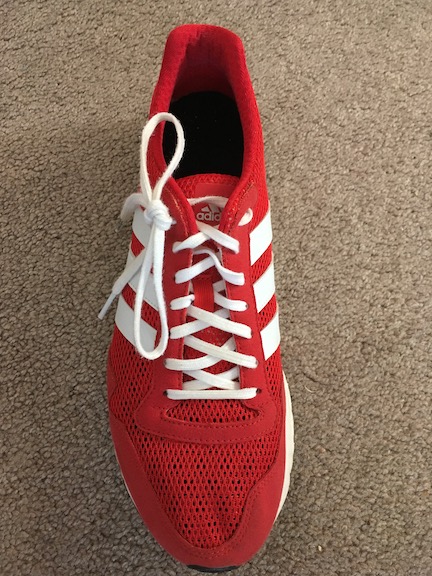 Side lacing
Side lacingSkip Lacing– Also just like it sounds, this type of lacing involves skipping eyelets altogether in areas of discomfort, such as if you have bunions.
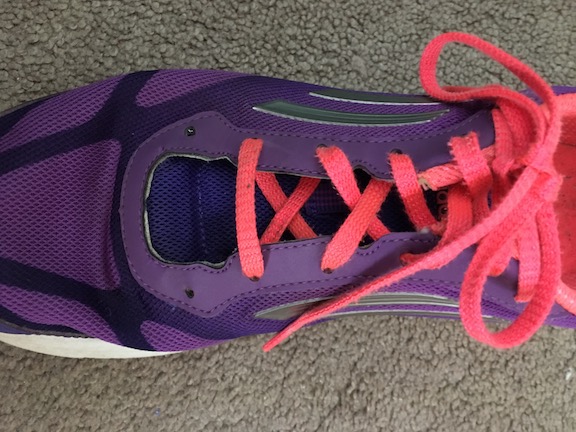 Skip lacing
Skip lacingStraight Lacing– Rather than using the crisscross lacing pattern, lacing straight across can help relieve pressure on the top of your foot. This creates more space between eyelets without skipping any of them.
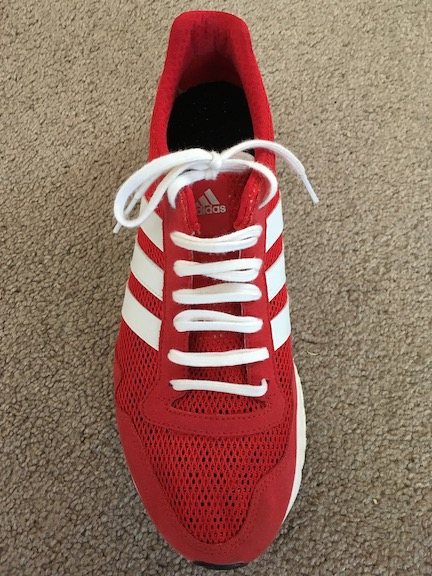 Straight lacing
Straight lacingFor more ways to tie your laces than you ever knew existed, check out Ian’s Shoelace Site.
Types of Sneaker Laces
So far, we’ve been talking about normal sneaker laces that tie. But there are some other options out there for fastening your athletic shoes that don’t actually involve tying them.
You've probably seen Velcro closures on some sneakers. They make it easier to fasten your shoes if you don't know how to tie them, or if you have trouble with finger dexterity. Here's an example:
Or you can try the Nike HyperAdapt self-tying sneakers. In 2016, Nike launched the first “self-tying” shoe, just like Marty McFly’s in the 1989 time-travel movie, Back to the Future Part II. The shoes tighten with the push of a button after you slip them on. Press another button, and the shoes loosen so you can take them off. The laces are powered by a battery that can be recharged, and a charge lasts a few weeks with typical use. A light lets you know when you need to recharge. The original release was priced over $700, but the 2019 re-release will be $350. There are a few of the original design available on Amazon:
But if the style or price of these options don’t work for you, by far the more popular non-tying option is the elastic lace. These laces fasten into the eyelets of your shoes or are weaved in and out like standard laces, and then they lock into place, eliminating the need to tie and untie them.
Since they are elastic, they stretch with the movement of your feet. The flexibility helps them maintain their tension, potentially making your shoes more comfortable and better fitting. They also expand if your foot swells after wearing your shoes all day.
Elastic laces may be a good option for triathletes who need to change in and out of their shoes quickly between events, since the shoes basically become slip-ons when they have elastic laces.
They can also be good for people who have difficulty tying their shoes due to a physical issue or age.
Or if you’re like my daughter and my husband and you don’t like to waste time tying or untying your shoes, you might like elastic laces to create a slip-on option.
Here are some examples of elastic sneaker laces:
Hickies - These are individual small straps made from a flexible rubber called thermoplastic elastomer. The pattern of the lacing system that you use in the shoes’ eyelets will result in tighter or looser shoes. You secure them with clasps one time, and then just slip your shoes off or slide them on without having to reconnect the Hickies each time. Learn more about or buy Hickies here:
Lock Laces - These elastic, no-tie shoelaces look more like standard laces than Hickies do. They lace up through the shoe eyelets and then fasten at the tongue of the shoe with an adjustable locking mechanism. To tighten or loosen the laces, you adjust the tension of the locking device. Lock Laces remind me of the ties you find on the hood or waist of some jackets that you can adjust and lock into place. Learn more about or buy Lock Laces here:
Xpand - These laces were created by a man who contracted West Nile Virus, which led to swelling of his feet, and shoe tying became very painful. The elastic allows the laces to stretch like the other brands, but they come with two different types of locking mechanisms. When you lock the laces into place, the lock can either be hidden inside the shoe, or it sits in place right on the outside of the top eyelet. There is no extra, loose lace hanging out of the shoe, so it has a more streamlined look. Learn more about or buy Expand laces here:
Note: As an Amazon Associate, I earn from qualifying purchases.
To Tie It All Up...
As you can see, there are many options for tying your sneaker laces. It’s important to tie your shoes properly for stability, comfort, and protection from injury.
So whether your feet are healthy, or if you have foot pain or some type of foot problem, you should be able to find a method that works for you. And if you just don’t like having to tie or untie your shoes on a regular basis, the recent no-tie innovations discussed in this article might be the choice for you.
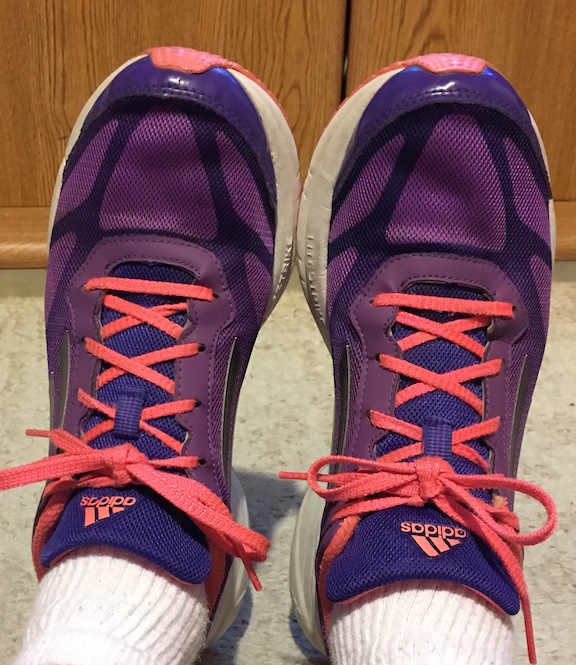 I tie my shoes the traditional way, although a bit loosely due to some swelling from a recent ankle sprain.
I tie my shoes the traditional way, although a bit loosely due to some swelling from a recent ankle sprain.